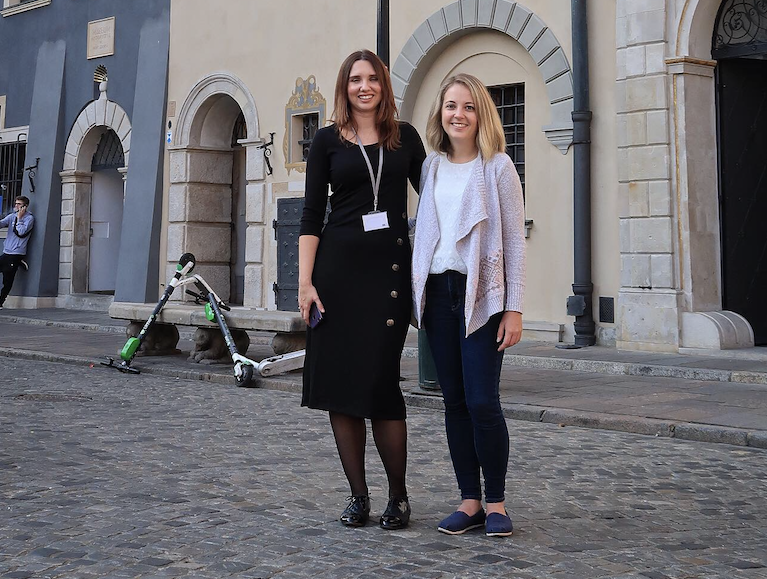Philly’s Ultimate Gem
If you’re familiar with the movie Rocky, then you probably recognize the Philadelphia Museum of Art’s famous steps. If that doesn’t ring a bell, maybe this picture will…

*Taken from Google*
All jokes aside, the Philadelphia Museum of Art, or PMA for short, is one of the most important museums in the United States. The PMA is one of the largest and oldest museums in the United States. It boasts an impressive range of artworks from all across the world and across time. Architecturally speaking, the museum is a beautiful neocolonial style with flanking columns and colorful decorations.

*Taken from Google*
Entering the museum, I was greeted by a Jazz performance. As fate would have it, that Friday night happened to be their monthly event night. It was a beautiful experience to be serenaded through my adventure of artistic pursuit.

Upon entering the impressive museum, I made my way up the stairs, past the giant statue of Diana, and turned right.

Turning the corner, I was heading toward the Asian Art wing. The museum is quite large, but I had been to this wing once before and it was my favorite one. Displaying different sculptures and architectural pieces directly unto its walls, the PMA is transformed into different worlds. First, the Medieval Cloister – I think I’ll let the pictures speak for themselves for this one.

It’s all in the details:


Waiting at the other side of the blast-to-the-past was the Japanese Teahouse.


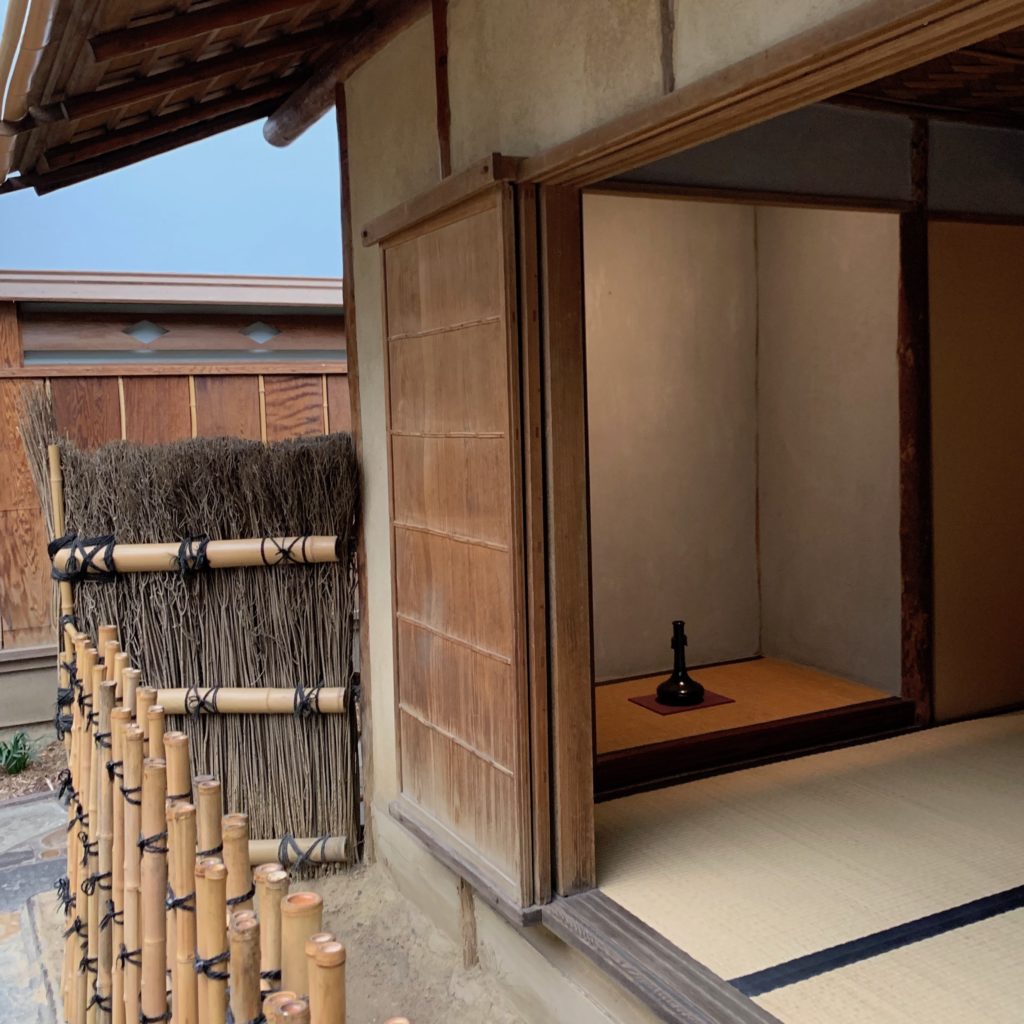
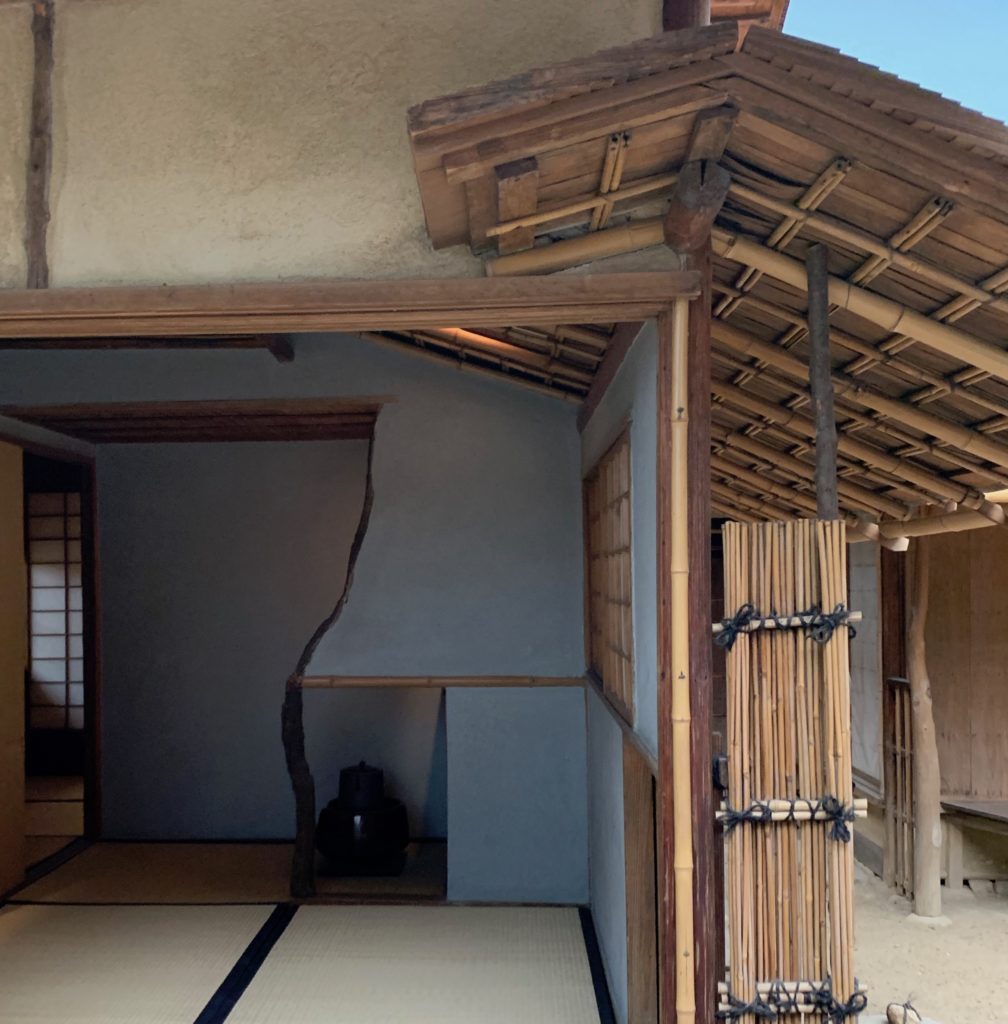

It’s really no wonder why the museum is such a gem. I would recommend it to anyone visiting! Aside from the beautiful pieces displayed in the museum, though, there is one little not-so-hidden gem that takes place outside the museum. Because the museum is built on a hill, it looks over the beautiful Philly horizon.
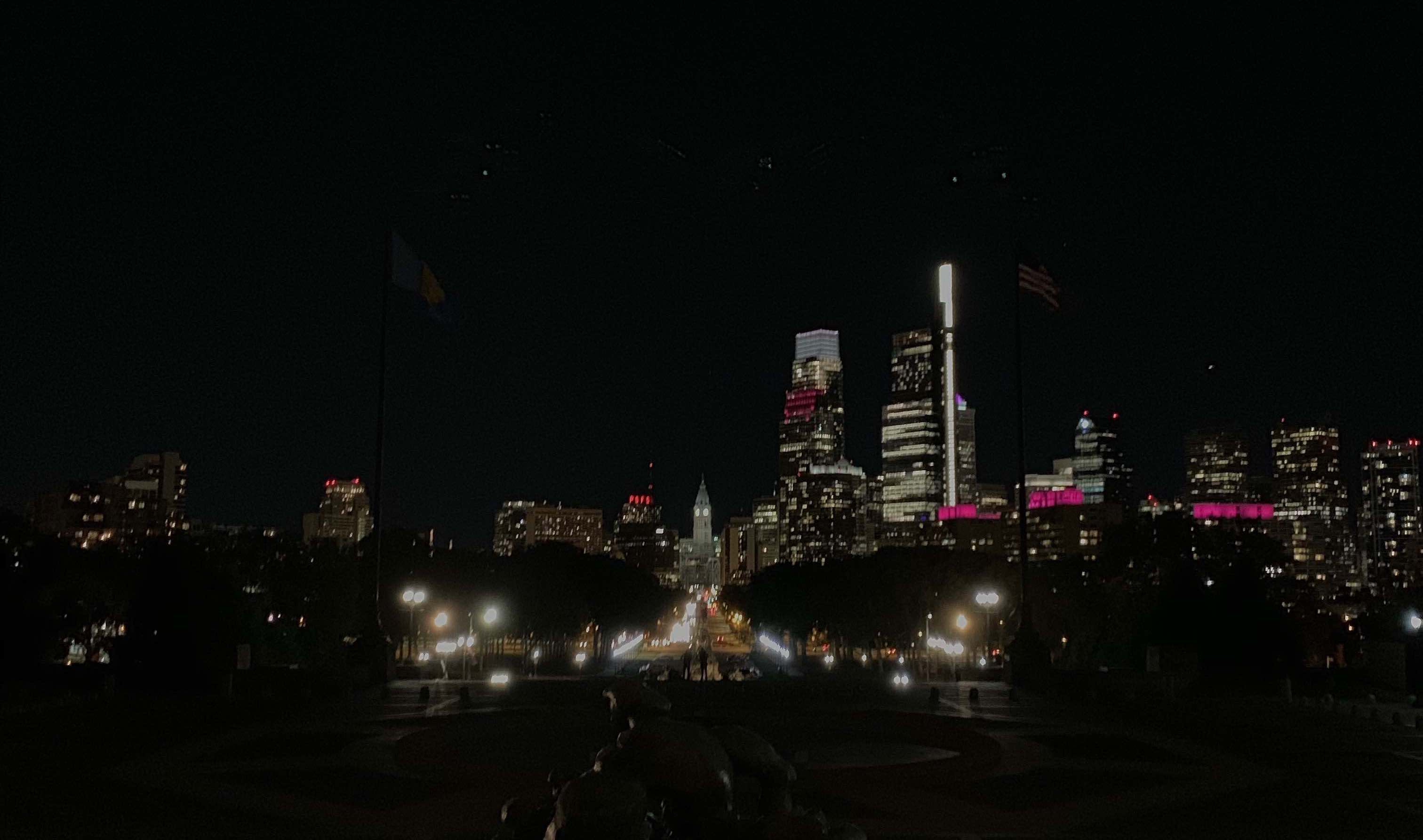
Taking a deep breath, it’s easy to fall in love with Philly. It is, after all, the City of Brotherly Love.
P.S.: If you hang back, sometimes buses will come bringing tourists from all over the world, and they will literally charge out of their bus and run up the steps to relive the Rocky scene – I think it’s so hilarious.
Philly’s Nighttime Hidden Gems
Philadelphia is not only the USA’s most historic city, it also happens to be my “home” town. I put “home” in quotations, because I’ve only had the privilege of calling this gem of a city my home for the past two-and-some years I’ve been living here as a student at Penn.
As you may know, it is hard to be a tourist in your own city. For me, I feel like I’ve been there and done that (even if I haven’t), or there’s just no sense of urgency to see the wonders of my own backyard. Realizing that Philadelphia is a World Heritage City though, changed that for me. I pushed myself to see something new every week.
One night, I went on a trip to Race Street Pier in Philadelphia’s Old City district. They had put up an exhibition called “Ghost Ship”.

The three-dimensional public installation features a mystique ship light projection unto black sails. Located at the Delaware Riverfront, the installation speaks to Philadelphia’s long social history since the 1600s. Recorded reflections by artists and experts tell the diverse tales of the colonial era.

Race Street Pier is the perfect viewing platform for the Ben Franklin Bridge. While it isn’t too cold out, they also have a beer garden with hammocks and beautiful lights. The misty atmosphere and faded lights brought out the city’s magical atmosphere…
Directly next to Race Street Pier is Cherry Street Pier, where they were hosting a design exhibition.

Projects ranged small and large, and there were works done by local universities including Drexel and Penn.

One design I found particularly compelling was a smaller scale one: noded bricks that locked into place. I thought it was a simple and elegant solution that solve any unevenness in building processes. Again, the architecture student in me prevails through my interests!
 As the hunger in my belly began to build, there was really only one place, in my heart, to venture for dinner: Chinatown! Taking the trolley over to center city, I heard Chinatown before I saw it. Before I reveal my delicious dinner, allow me to interrupt the feed with some of Philly’s Finest Fluorescent Facades:
As the hunger in my belly began to build, there was really only one place, in my heart, to venture for dinner: Chinatown! Taking the trolley over to center city, I heard Chinatown before I saw it. Before I reveal my delicious dinner, allow me to interrupt the feed with some of Philly’s Finest Fluorescent Facades:

They really caught my eye on my walk over, and I thought they poetically served as a visual representation of the night’s electric air.
Chinatown was hosting a bazaar that night, so the streets were overflowing with people bringing pineapple drinks, skewer sticks, and even tacos, for some reason.


Escaping the chaos of the street, we found refuge in Nan Zhou Hand Drawn Noodles, my favorite Hidden Gem, where I concluded my day with the best bowl of House Special Noodles (beef balls, beef brisket, bone broth soup, cilantro, and hand drawn noodles, of course).

It really doesn’t get much better than this, does it?
New York, New York
The household names of New York gems are as follows: The Statue of Liberty, Times Square, Central Park, the New York Slice (of pizza)… the list goes on. Being a Philadelphia local, I have the pleasure of being just one bus ride away from The Big Apple. As busy as the college student life can get, I always try to escape to New York at least once a semester, for sanity’s sake. This time, I decided to explore this World Heritage City’s Hidden Gems.
I sleepily made my way to my local Philadelphia Megabus stop at 6:30AM and dozed through the two-hour drive. The next thing I knew, we were here: New York, New York. I hop unto the rustic but charming Metro at 28th Street, off to seize the day
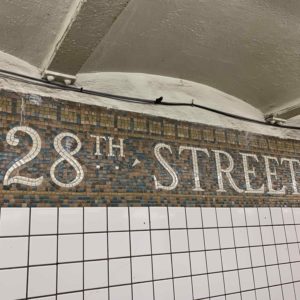
First stop: The State of Liberty, South Ferry.

Or more precisely, its viewing point at Battery Park. Upon my arrival, I was greeted by an adorable sight: Battery Park has an urban garden, and it seemed that a group of school children were out on the fields, busy at work. They had their own clipboards and were busy recording, I’m not sure what.
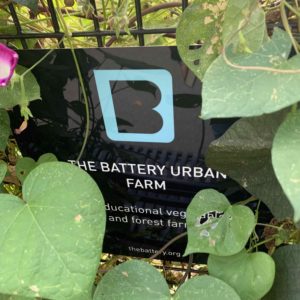

I had never been to Battery Park before, but I think it might be my favorite park in New York now. Which is a bold statement to make, considering New York has over 1,700 parks throughout its five boroughs.
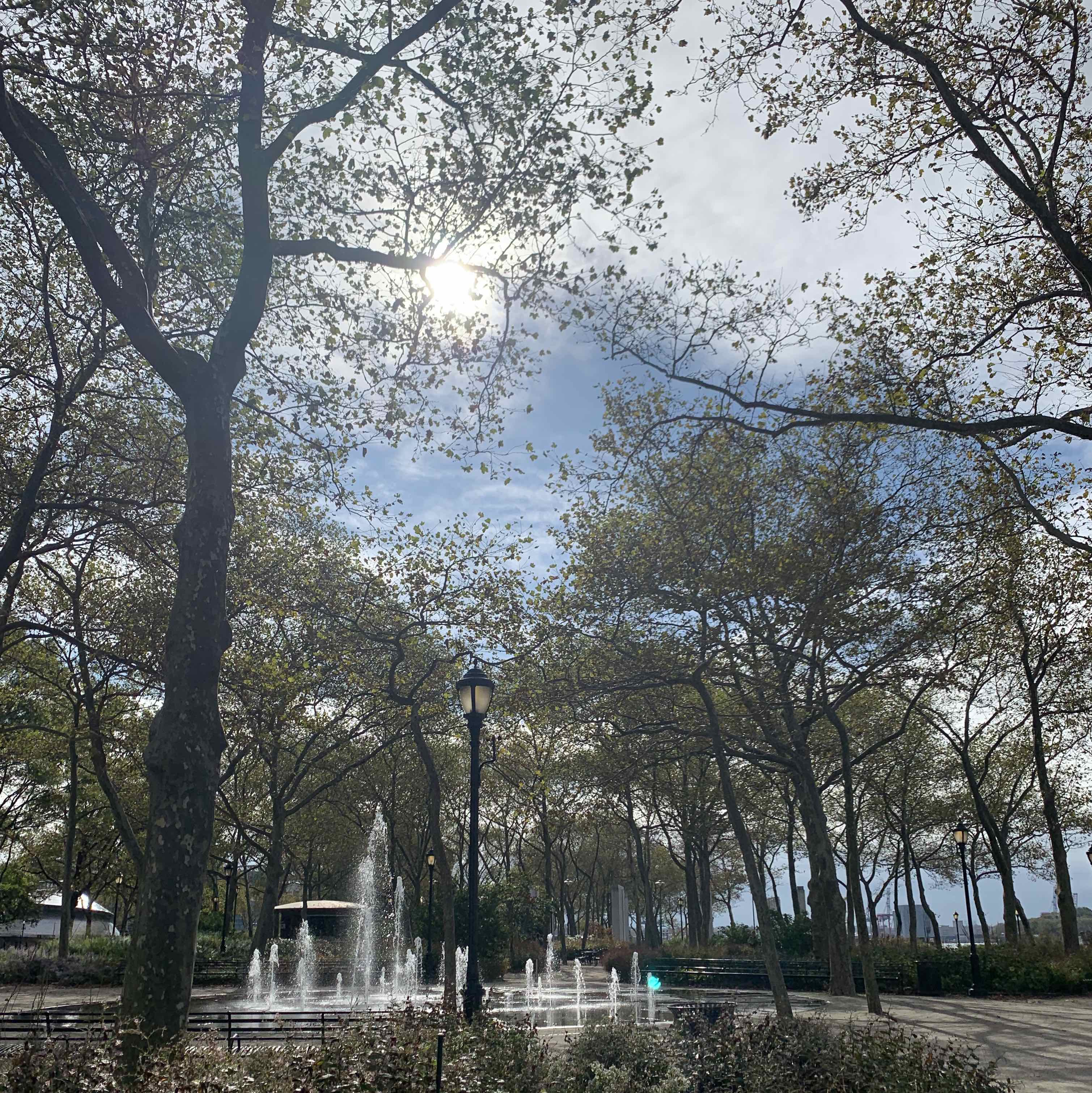
Amidst the bustling mile-long line of tourists en route to Lady Liberty, Battery Park had a meticulously planted landscape lush with flowers and greenery. The edge of the park, which overlooks the water, is lined with benches that provide a fantastic view of the famous monument.

Although she may be tiny, the view reveals how spectacular it is that a monument could attract so much attention despite being so far from the mainland. Her green skin almost blends into the blue sky, a charming balance between invisibility and outright starkness.
After enjoying the view, I made my way over to the World Trade Center area where The Oculus stands proudly.
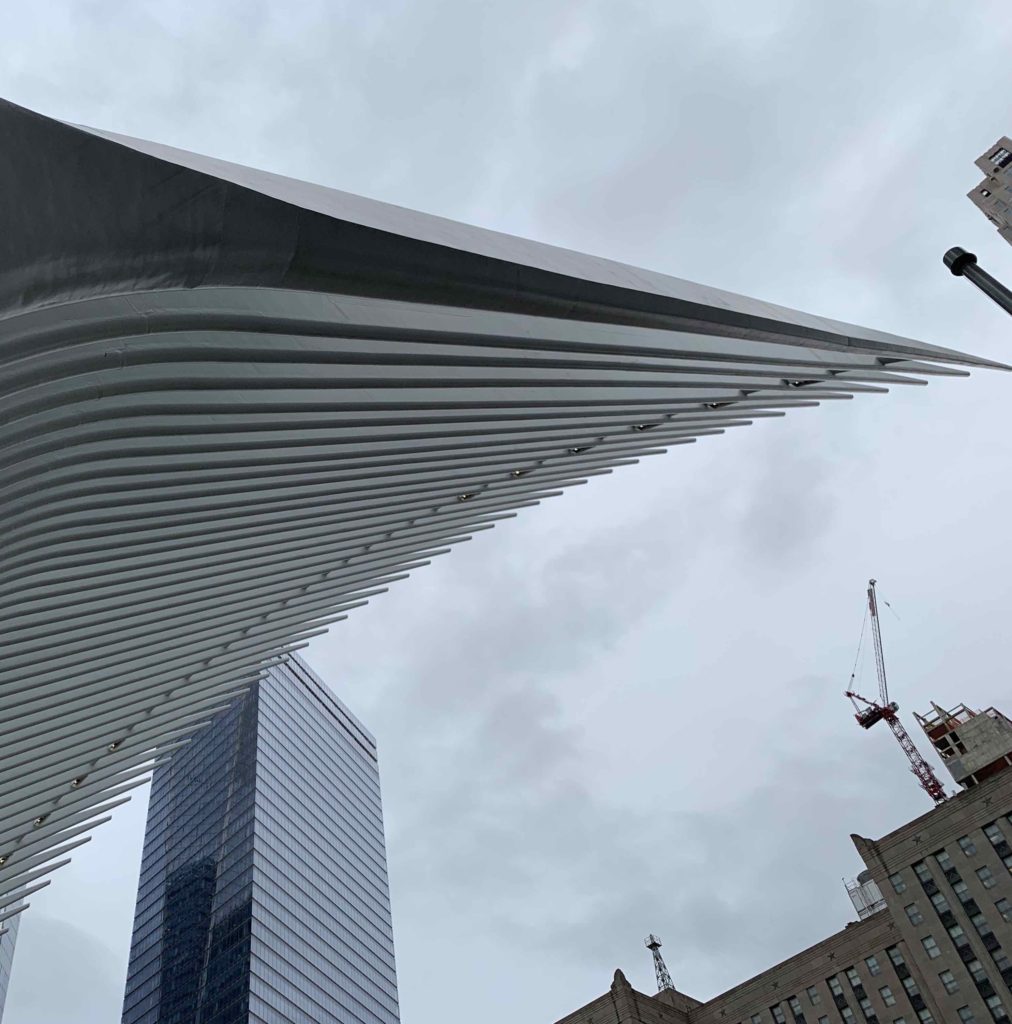

Designed by architect Santiago Calatrava, the impressive shopping center and transportation hub features an exterior of clean white ribs, mimicking an insect ready to take off.
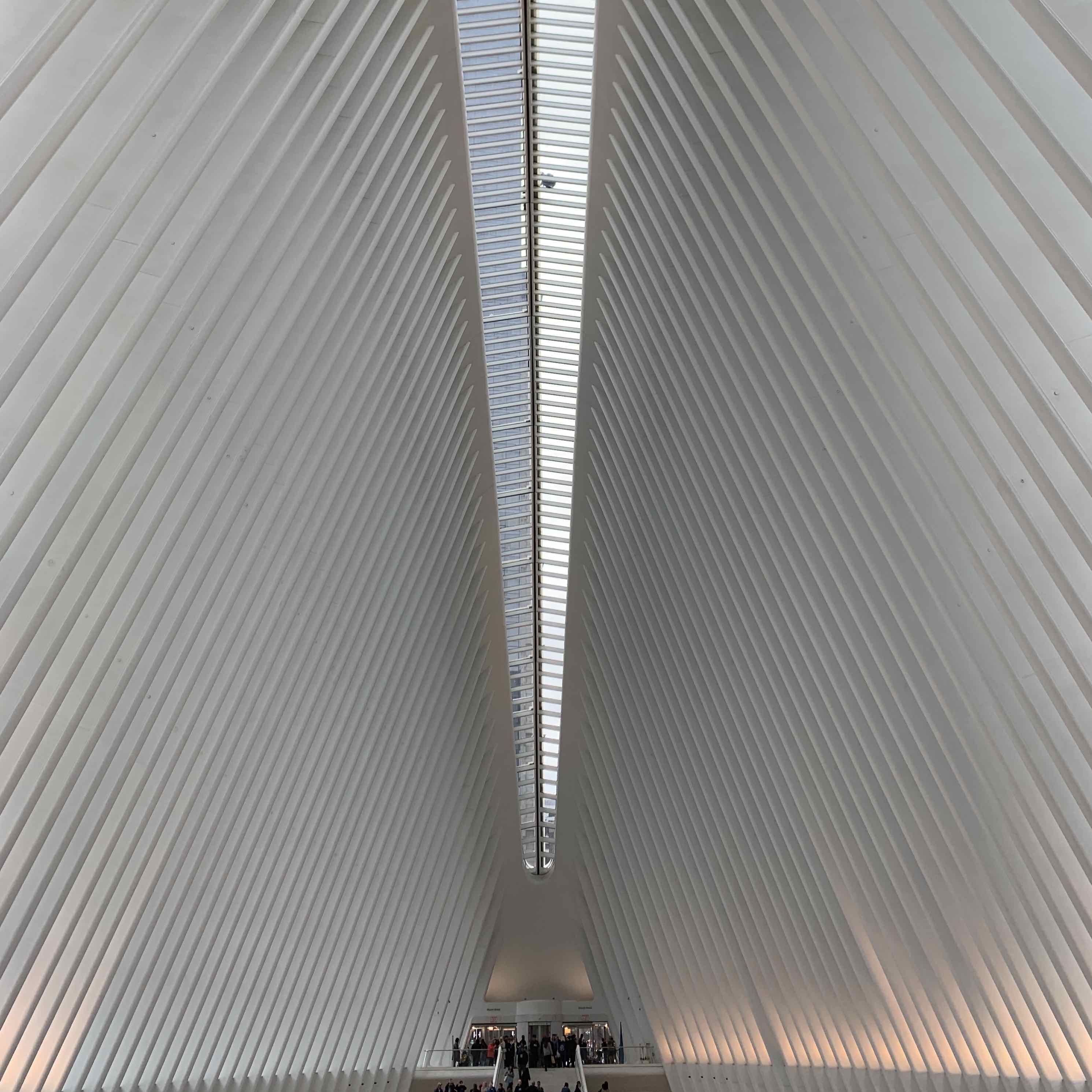
The interior is inspired by the Neoclassical oculus, traditionally a round opening on a wall, but here interpreted as a massive glass skylight spanned across its ceiling. The oculus opens every 9/11 to the New York sky as a tribute to the tragedy of 2001. The architect said he was inspired by Grand Central Terminal as New York’s existing quintessential monument, a place that is bustling with life.
Going off of my theme of favorites, The Oculus is definitely up there on my list of New York architecture. Opened in 2016, it is a tough contender of New York’s many monuments, which despite its newness is able to compete with existing historic architecture because of its innovative design. The interior space feels overwhelming and slightly disorienting, which I feel is appropriate to capture the essence of the tragic World Trade Center history.
Leaving Lower Manhattan, I hop back on the Metro and make my way to Museum Mile at Upper East Side. I visit a lesser-known but incredibly impressive contemporary museum: The Cooper Hewitt.
*Taken from Google*
The Cooper Hewitt Museum is a Design museum that features unique contemporary projects taking place across the world. During my visit, they had exhibits up on recycled seaweed products, eco-friendy cement, a water collection system for desert areas…

The list of impressive projects goes on, really. One that I thought was particularly interesting was a scent that scientists had reconstructed from a fossil of a flower. 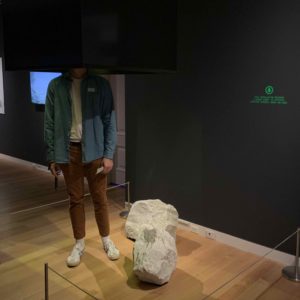
Their featured exhibition was one surrounding artificial intelligence and facial recognition, which was simultaneously disturbing and yet engaging.
After the museum, naturally, I made my way across the street to Central Park. It was a gorgeous day, so I took my time and walked the path around the lake.
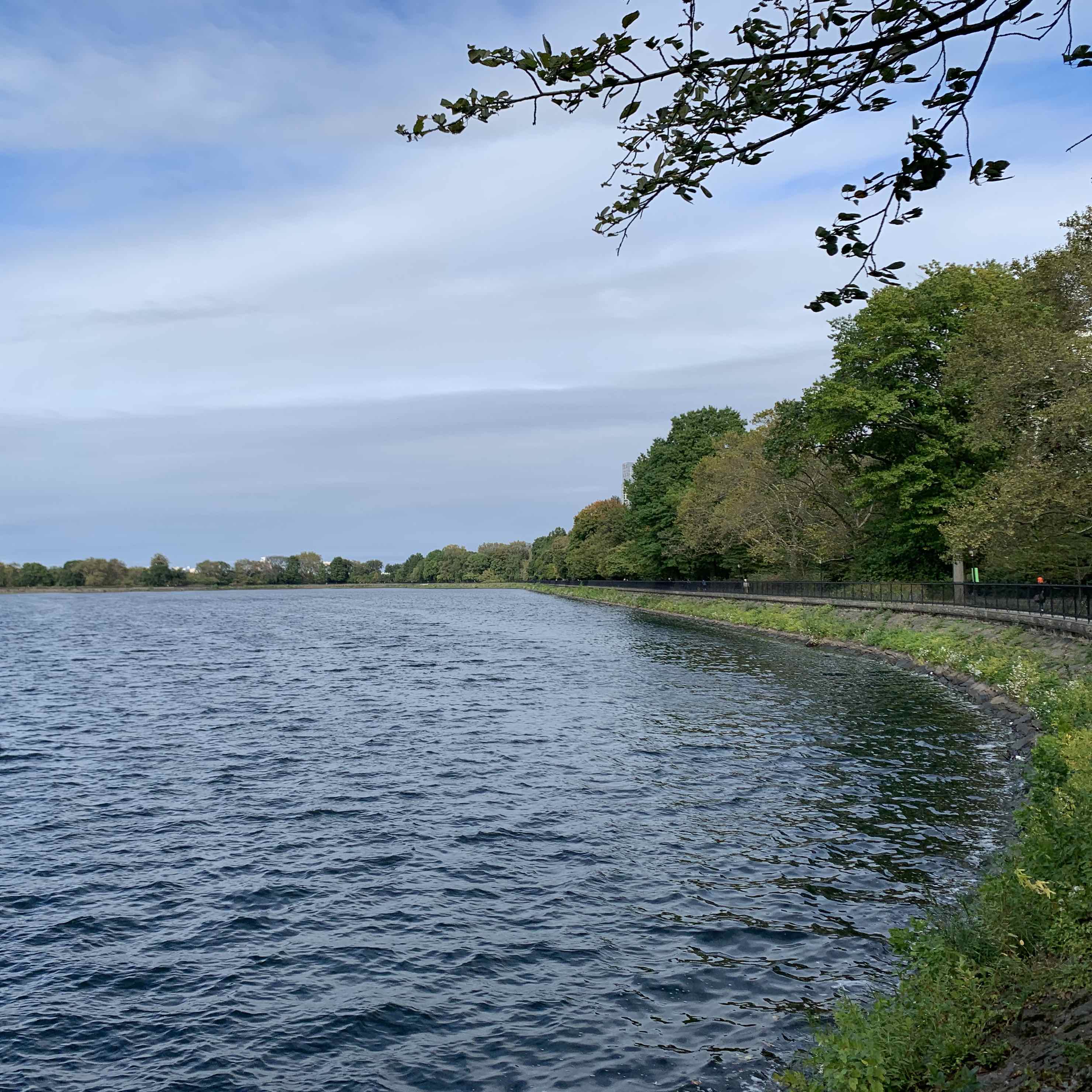
I treated myself to a crepe from a food truck (which was overpriced but good), and enjoyed a peaceful afternoon.
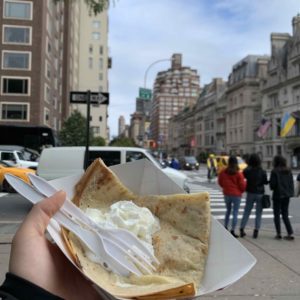
As a grand finale, dinner was a giant bowl of udon from TsuruTonTan Udon Noodle Brasserie in Soho. I chose their Truffle Creme with Crab and Mushroom Udon, which honestly changed my life. The noodles were soft and the creme was addictive; I think it’s safe to say I will be going back there soon.
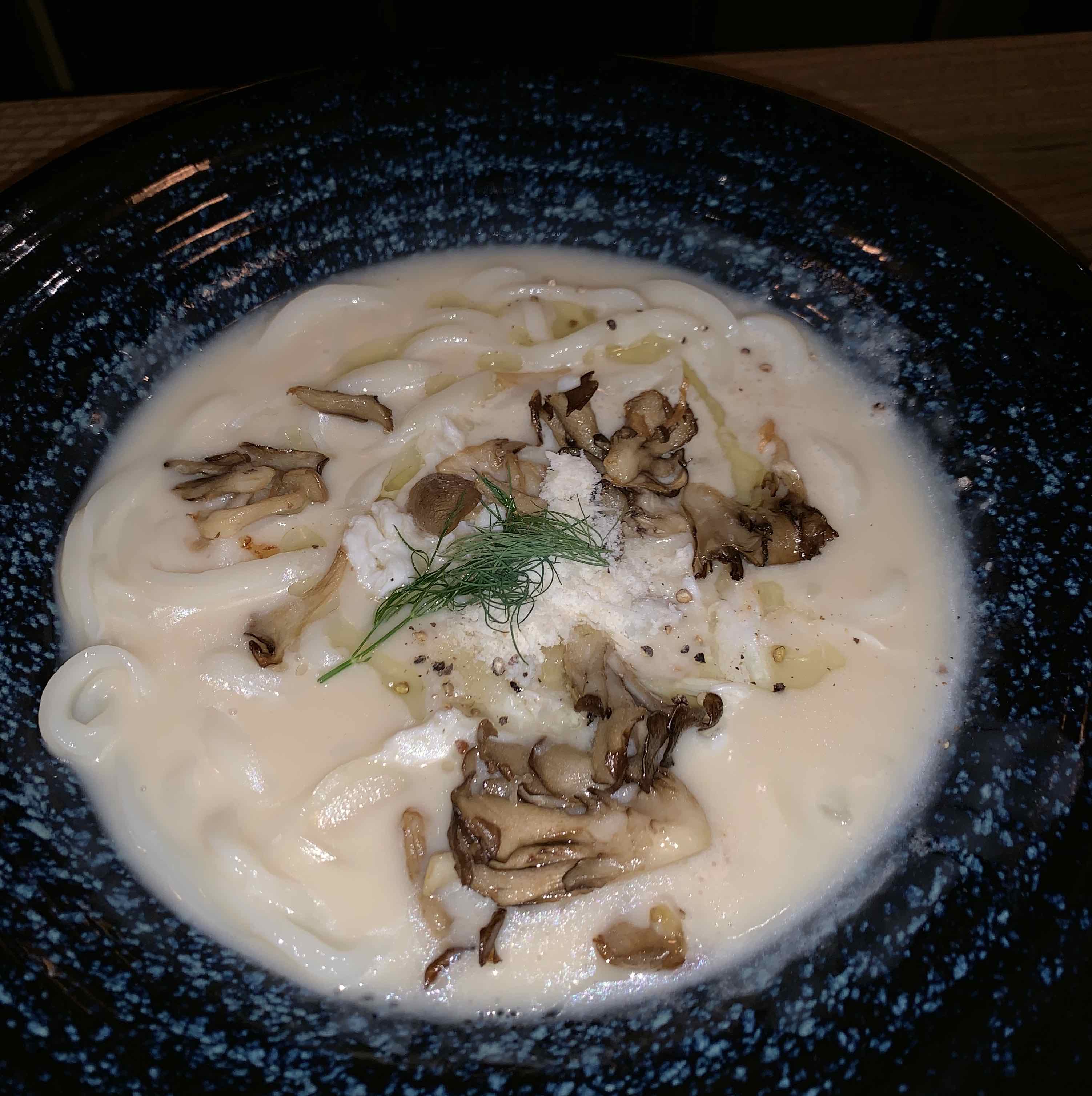
We made a quick pit stop to New York’s *best* creperie, Lady M, to sneak a bite (or ten) of their Matcha and Tiramisu crepe cakes. I was way too full, but I convinced myself that the calories were well worth it anyway.
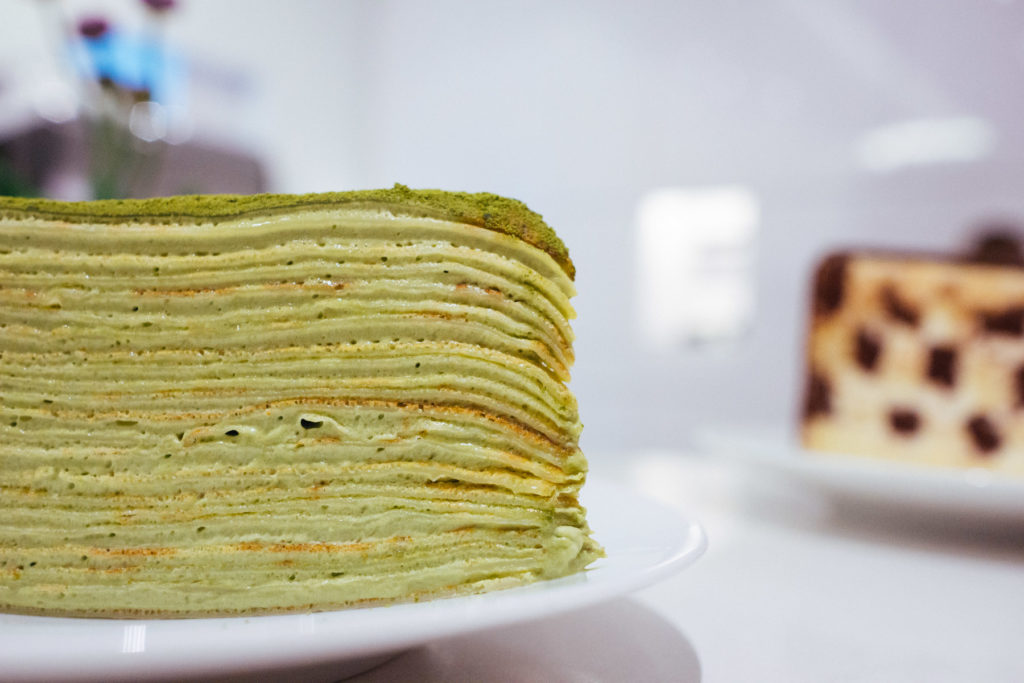
*Taken from Google*
Walking back to the Megabus stop, I was giddy with joy and trying very hard to digest my food before having to sit on the bus for another two hours. It was a day trip very well spent indeed.
Quebec City Architecture Portfolio

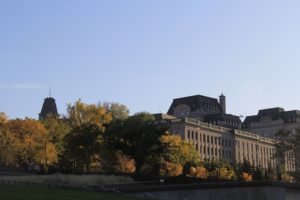

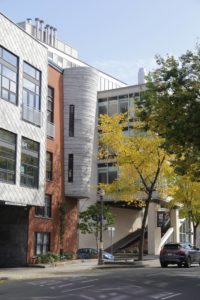
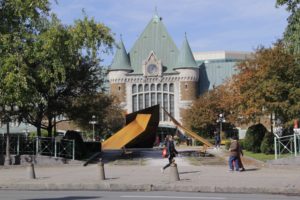
Vienna – The Home of the Habsburg Dynasty, Gustav Klimt and Wiener Melange
Vienna in three days promised to be a sensational short trip. First of all, we were very excited because of its striking history and, as a culinary icing of the cake, we were definitely looking forward to visit one of Viennese coffee houses to taste a piece of Sacher cake. Besides the tasty Austrian food, Vienna’s architecture is a must-see as well. Beautiful art-noveau buildings and splendid boulevards invite the visitor to stroll around the city. Furthermore, the atmosphere in Vienna is amazing. The people are friendly and helpful and although Vienna is rich in history, the city is very dynamic and offers many cultural programs for young people. Besides an outstanding nightlife, we wanted to see as many historic sights as possible. We started our first day with a walk around the Hofburg where we crossed the Josephplatz and the Heldenplatz. After a short break at the Palmengarten Café, where we had a cup of the famous Wiener Melange and a piece of Sacher cake, we visited the Sissi Museum and the Kaiserappartements in the Hofburg.






Both exhibitions tell the story of Empress Elisabeth “Sissi” of Austria who is one of the most famous Habsburgs although she originates from the house Wittelsbach in Bavaria. Up to now “Sissi” is known for her beauty and a lot of movies about her life and her marriage to Emperor Franz Joseph I. were made within the last sixty years. In the exhibition, visitors can marvel at some of her dresses and learn about her life in Bavaria as well as her reign in Austria and Hungary.


After our “Sissi – filled” morning, we visited the Stephansdom and the Kunsthistorische Museum (art-history museum) which we can highly recommend. Although it is a bit outdated, it is worth visiting, since many famous paintings are presented in the picture gallery. In addition, the Egyptian collection is definitely another highlight, depicting Egyptian history from 2200 B.C. until 300 B.C.
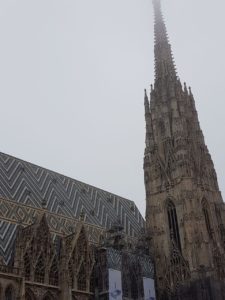
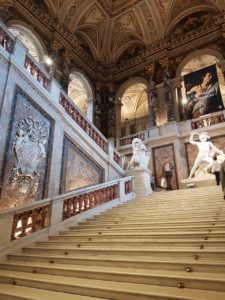

On our second day we visited Schloss Schönbrunn which used to be the summer residence of the royal family and is also known as the “Austrian Versailles”. It is a very beautiful and opulent palace where you can still see and feel the wealth and the power of the former Habsburg dynasty.

Finally we have to admit that our trip to Vienna was a bit hectic because we wanted to see as much as possible in only three days, but we will definitely come back for a longer stay since we fell in love with this beautiful, historical city and, of course, we need some more Wiener Melange and Sachertorte.
Hidden Gems: QC finds
Whenever I travel, I go off to random places. Other than typical tourists’ sites, I set aside a day for exploration. It usually starts from the supermarket or farmers market – after going through aisles and aisles products with familiar or unfamiliar names, I pick out the few bags of snacks that seem to be the most interesting and open them up right away to get a bite of every single one. Then I would spend the rest of the morning wandering around a neighborhood, camp out at an art museum, or sip on a flat white at a local eatery (preferably not the one with most comments on YELP but definitely with a 4.5 star rating or higher). And of course, with my camera. I want to fit in, to live the life of a local person on a day-off.
Here are a few favorite “it-just-so-happened” finds of the city: hidden gems that surely shall not be missed.
Chateau St. Louis tour: Hear about how the castle came to be. It’s a project procrastinated for 100+ years since its initial plan of construction. Yes, the ruins seem to be nothing more than brick walls, but give it an hour and try to imagine the hundreds of years that site has witnessed. Take a look at the diamond pin from past parties, the sealed, gold-coated silverwares and plates that archeologists spent months digging out, the handsome painting of overly obese governor by his amazing PR team of the time.
Address: Terrasse Dufferin, Quebec City, Quebec G1R 4P5, Canada

Chez Boulay Cafe: Recommended by locals. Someone has described Quebec as France plus UK divided by America. By that analogy, Quebec cuisine would be more or less like upscale French restaurant located in upper state New York with the proper service you would expect only in the UK – just try it for yourself.
This is the perfect place if you are not interested in a full-on meal. No matter you are looking for something like pure sugar, a breakfast croissant, a savory quiche, or a warm soup to bring you back to life from the cold, this is the place to be.
Address: 42 Côte du Palais, Québec, QC G1R 4H8, Canada

Ex Machina: A theatre reopened in September, Ex Machina has a few shows lined up for the rest of the year. It reminded me of the Shed at Hudson Yard in NYC. It’s a new interactive space that allows for dialogs between artists and viewers. The remarkable design, from the exterior reinvention of a historical site to the interior industrial elements and modern technology, give this place so much potential.
Address: 966 Rue Saint-Jean, Québec, QC G1K 4B9, Canada

Best way to explore QC: give it a few days. Other than the must-sees, just walk around – it’s a small enough place that makes everything easy. Take note of the restaurants and special stores and random art on the street. Then spend the afternoon walking down Rue de S. Jean outside of the Old City. Or if you a nature person, head over to the park and walk along the river, or get on a bike tour to the waterfall.
Legend of Regensburg
– Fat Agnes –
In the free city of Regensburg lived Klara, the daughter of a tinsmith, who was usually called the “Liebfrauenbildlein”; because she was exceedingly beautiful in face and figure. She grew up to be, god-fearing, devote and honourable, as it befits a fine virgin.
One Sunday, when she returned home from the early mass, it happened that a stately nobleman came in her way; he was dressed in velvet and precious finery and wore a heavy gold chain on his chest and a beret with big feathers on his head. And when he saw the lovely maiden, he stopped and looked after her, almost shocked, until she went around the corner. The next Monday, according to her habit, Klara was at mass at St. Cassian’s, and when she stepped out of the church, the nobleman stood there and greeted her. And on Tuesday he greeted her again and suddenly put a little letter into her hand. Hence the virgin blushed deeply and thought she was holding a glowing coal between her fingers. But she did not want to drop the letter in fear of the gossip. Instead she carefully hid it in her scarf, with the intention of throwing it into the fire at home. And if she had done so, she would have been spared great suffering.
But in her small chamber she thought different, because she liked the delicately folded parchment, but especially the gold embroidered ribbon with which it was wrapped. And as she was pondering and turning the little letter back and forth in her hand, suddenly a little voice, like the chirping of a cricket, said to her: “Well, you foolish thing, why do you hesitate so long? Hot off the press! Dead letters don’t bite.” But whoever spoke like this? It was a tiny, barely inch-high woman, crouching in a corner at the fireplace. At first the maiden was horrified by the spook; but because the little one seemed to be untroubled and even acted friendly, she let herself be persuaded and reached for the scissors. And at the moment the tape was cut, the woman grew one finger length higher.

On Wednesday, Klärchen did not go to mass, but locked herself in her chamber as if she were ill. In the meantime, however, she looked for the letter again and read how the nobleman had developed a fierce love for her and could never let go of her and wanted to serve her as an honourable, honest suitor. Such a thing was written in the letter with even fancy words. And while she was still reading, the woman appeared again and cried, “Listen, my daughter! Don’t you hear the sound of spurs in the alley?” And Klärchen hurried to the window and saw the nobleman walking along. He noticed her hiding behind the curtain, because the lovesick have hawk’s eyes. And he greeted up, and she greeted down. But the woman giggled up her sleeve and was growing as high as a shoe, even though it had only been finger-length before.
Thursday, during the meal, the tinsmith scolded his daughter, “You dream in broad daylight and throw more salt into the soup than my palate would like, and the cat steals the meat from the pot before your very eyes.” Towards evening, in the twilight, the woman came back and carried a box of ebony under her arm and said, “Take it. It’s a memento from your suitor.” But Klara stepped back and replied: “Go away, temptress! A virtuous virgin shall not take gifts.”
Then the woman departed grumbling; but at the door she turned around again and said, “A gift is better than a purchase. Think well and see what you despise.” With these words the little woman opened the box, and – o glory! – Inside was a magnificent necklace of vain gold and richly set with pearls and precious stones. The flickering and sparkling enchanted Klärchen and her eyes began to sparkle too. She took the box and stepped in front of the mirror and enjoyed the finery very much. The woman applauded and shouted: “Now you may carry your nose as high as the Countess Monika does.” On Friday they went so far that the nobleman climbed over the garden wall in the darkness and came into the alcove for a little chat. – The little woman was already a cubit high today. – The nobleman talked quite intimately with the tinsmith’s daughter and told her even more beautiful things than he had written in the letter. Meanwhile the woman kept watch at the entrance of the alcove, and – lo and behold! – with every word of love and every handshake it grew an inch in height and an inch in thickness.
And when the couple stepped out of the alcove on Saturday, there stood a superhuman-sized woman with the circumference of a beer barrel. Klara was frightened and screamed, “What are you doing here, you brute?”; But the giantess just laugh loud and replied: “How, my daughter, do you not know your old friend anymore? I am Fat Agnes, and you have kept me well and fed me so much that I, at first a tiny thumb, have grown so tall and fat.”
It is to be known, however, that the fat Agnes was a hellish ghost, which was roaming the city at the time. Initially in the form of a thumb-length woman, it lured people from the right path by those idom and common phrases that guilty pleasure uses to gloss over its actions. And where it was not banned by prayer and devoutness, it stayed like a vampire and sucked itself full and prospered and grew to a ghastly monster.
Klärchen, poor Klärchen: After the nobleman had had his amusement with her for some time, he left her, not bothered by her reproaches and tears, and married the daughter of a rich family. Same things happened to other virgins who had been involved with Agnes, and some of them fell so low that their names were later found in the register of the Reichstag, who, as is well known, was entrusted with the care of the travelling prostitutes.
As far as the menfolk were concerned, the ghost especially seduced young people, who had untold amounts of money in their fingers. It whispered in their ear: “A few pennies will not harm your Lord – he does not feel it. A penny ain’t a silver coin!” Several of these bewitched journeymen started just with a grab into the cash register and ended up as highwaymen.
Such moral corruption made the wise council of Regensburg very much concerned, and they seriously thought about how to master the spook. Physical weapons, however, did not work on him, and so the venerable Minorite Monks were approached for aiding and abetting. According to the legend, they did not easily banish the ghost into the deep cellar of a desolate house at Bäckenspreng. It could still be heard whimpering and groaning for many years afterwards, to the horror of everyone passing by, in the time between the sounds of prayer and the crow of the rooster.

